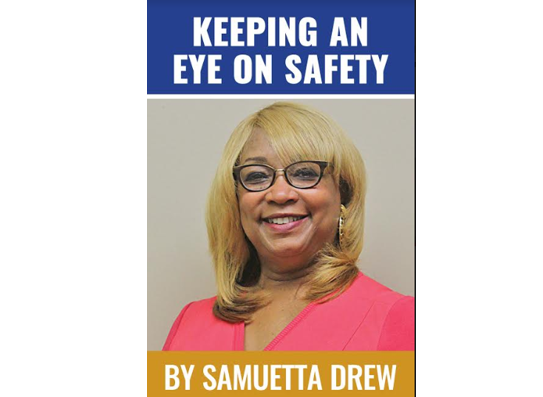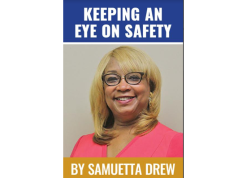By Samuetta Hill Drew
This summer’s safety articles began with ways to help protect individuals and families traveling to their favorite destination’s sites, both abroad and within the U.S. Then the articles transitioned to beach safety since many summer travel destinations involve the beach, especially around July 4.
Now many individuals and families have traveled to their vacation sites and are beginning to stay at home. They are enjoying outdoor grilling as well as other backyard fun activities. Due to the sizzling hot summer temperatures this backyard fun often includes backyard pools. With this in mind, we will transition yet again to explore ways to keep your backyard pools fun, yet safe, especially for toddlers and preschoolers.
The glistening turquoise-blue water can be very enticing to an active toddler or an overly confident preschooler; making drowning the number one leading cause of injury-related deaths in young children 1-4 years old. The U.S. Consumer Product Safety Commission studied drowning among children aged 4 and under in Arizona, California, and Florida where pools are especially common. It found that nearly 70 percent of the children were not expected to be at or in the pool, yet they were found in the water. In fact, 46 percent of the children were last seen in the house.
Therefore, there are some real dangers associated with backyard pools and their owners have a responsibility to take some serious safety precautions to help protect the safety and well-being of everyone who uses them, but especially toddlers and preschoolers.
One of the first safety precautions is fencing your pool whether it’s a large inflatable pool, freestanding above-ground pool or an in-ground pool. It needs to be fenced.
One fact stated in an article by “Healthy Children” is that fences are the most effective, proven way to prevent drowning of young children. They and other professional safety articles recommend the following for fencing:
• 4 feet, 4 sides. The pool fence should be at least four feet high and surround the pool, separating it from the house and the rest of the yard.
• Climb-proof. The fence should not have any footholds, handholds, or objects such as lawn furniture or play equipment the child could use to climb over the fence. Chain-link fences are very easy to climb and are not recommended as pool fences. If they are used, make sure the openings are 1 and 3/4 inches or smaller in size.
• Slat space. To ensure that a small child cannot squeeze through the fence make sure vertical slats have not more than four inches of space between them. This will also keep small pets safe, too.
• Latch height. Opt for a pool gate that self-closes and self-latches that only opens out, away from the pool area. The latch should be out of a child’s reach – at least 54 inches from the ground. Never fully rely on a gate to protect young children: older children do forget to close gates, posing a danger for young siblings or friends.
• Gate locked, toy-free. When the pool is not in use, make sure the gate is locked. Keep toys out of the pool area when they are not in use.
This article is the first in a pool safety series so you can Keep an Eye on Backyard Water Safety for everyone, especially those young little ones.



